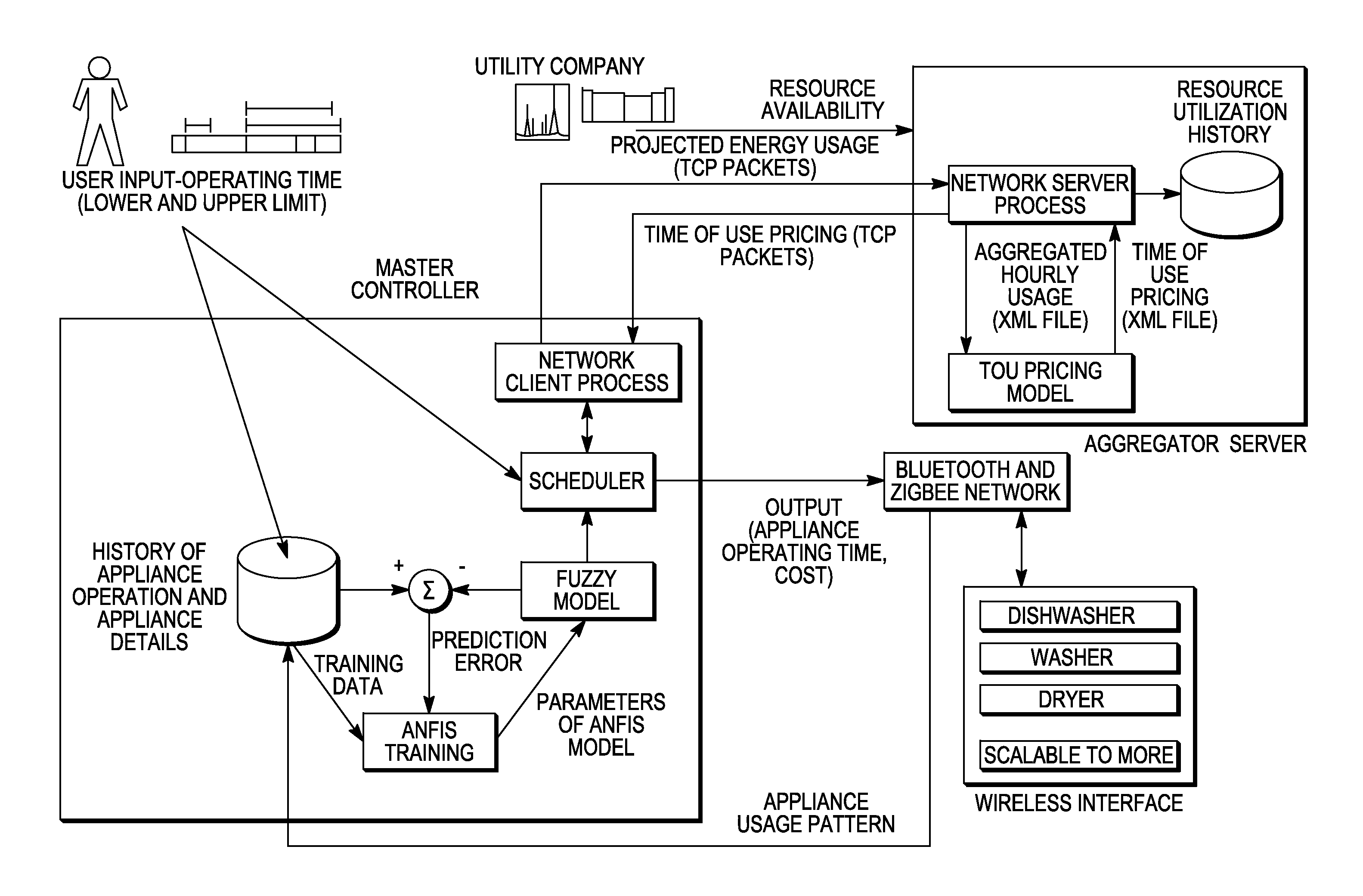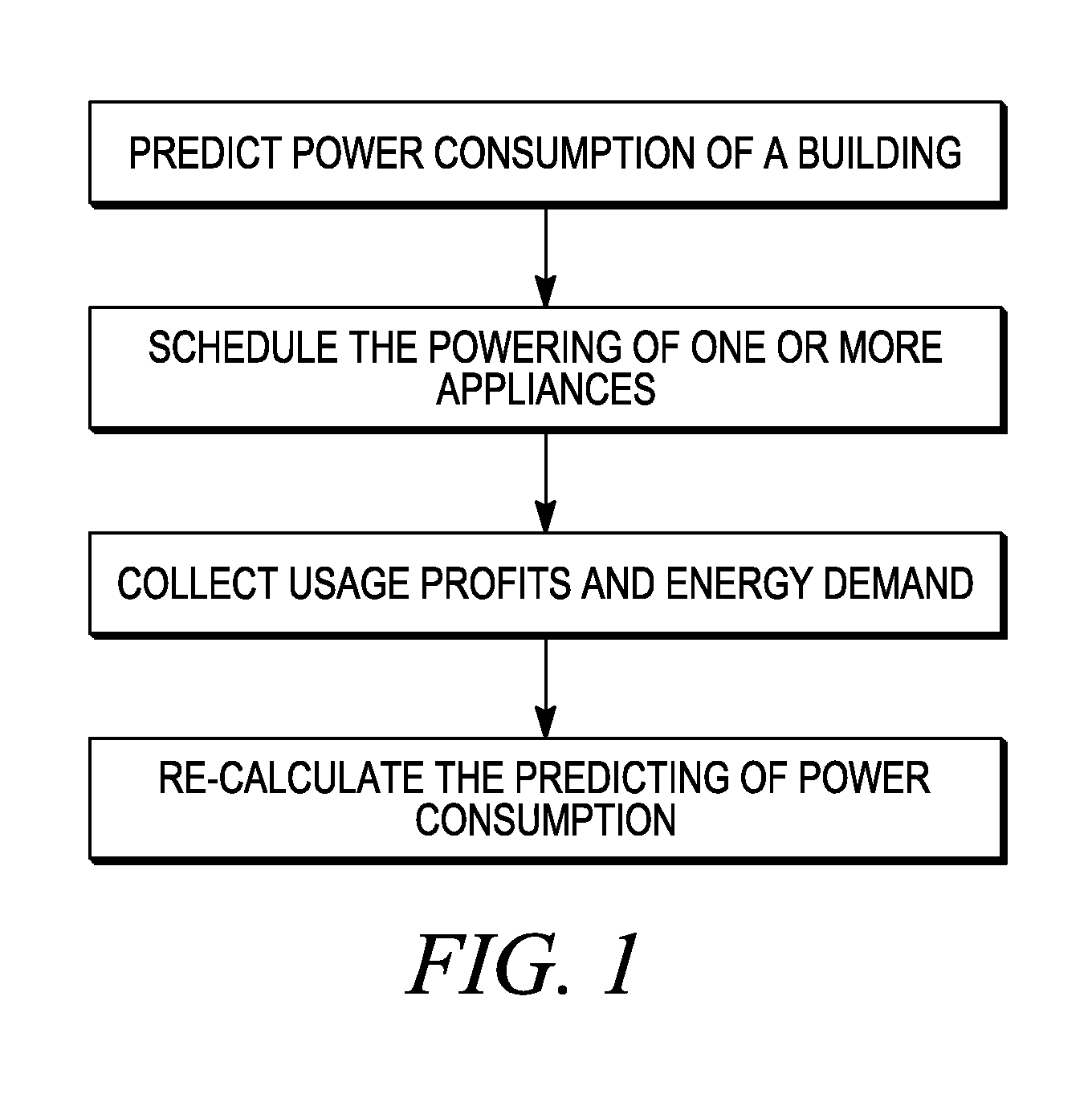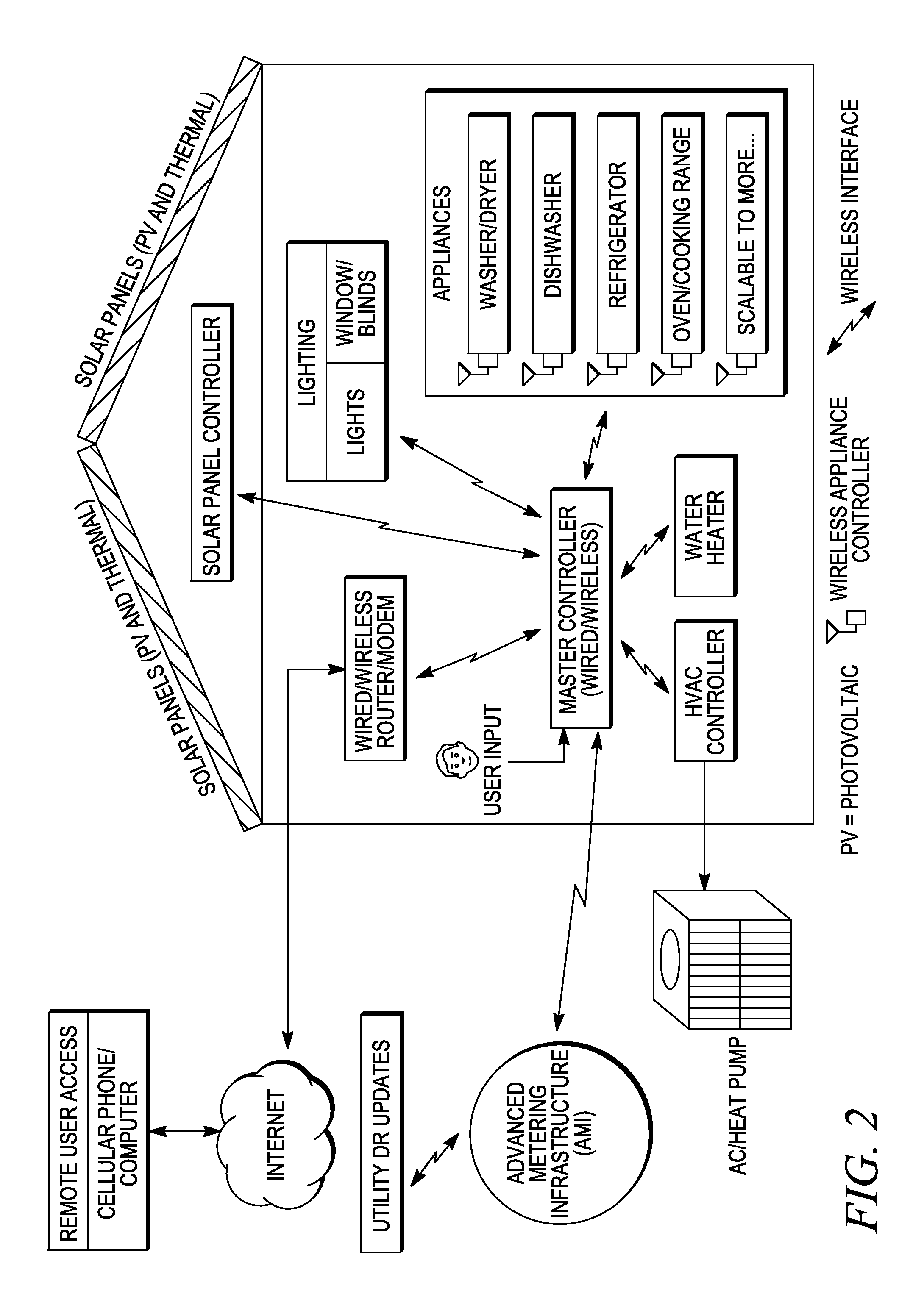Residential and commercial energy management system
a technology of energy management system and residential energy, applied in adaptive control, program control, instruments, etc., can solve the problems of grid instability or voltage fluctuations, peak load shift and load reduction on the electricity grid, and failure to take into accoun
- Summary
- Abstract
- Description
- Claims
- Application Information
AI Technical Summary
Benefits of technology
Problems solved by technology
Method used
Image
Examples
Embodiment Construction
[0032]One goal of the proposed system is to predict and tailor the electricity demand (e.g., peak load reduction and shift) in a locality at a given day / time, avoid blackouts, and reduce the utility bills for residential or commercial customers. This will be achieved by dynamically scheduling and controlling various residential or commercial appliances in the dwelling unit.
[0033]A residential or commercial consumer's daily activities can be characterized by a list of tasks to be scheduled at preferred time intervals. Some of these tasks are persistent, as they consume electricity throughout the day (e.g. A / C, refrigerator, etc.), while others are more flexible within a defined time interval (e.g. washer / dryer, oven, etc.). The demand-side energy management problem is considered as the scheduling of a consumer's daily tasks according to user-specified deadlines and the time of use pricing of the market, while achieving cost saving and peak reduction. A branch and bound algorithm is f...
PUM
 Login to View More
Login to View More Abstract
Description
Claims
Application Information
 Login to View More
Login to View More - R&D
- Intellectual Property
- Life Sciences
- Materials
- Tech Scout
- Unparalleled Data Quality
- Higher Quality Content
- 60% Fewer Hallucinations
Browse by: Latest US Patents, China's latest patents, Technical Efficacy Thesaurus, Application Domain, Technology Topic, Popular Technical Reports.
© 2025 PatSnap. All rights reserved.Legal|Privacy policy|Modern Slavery Act Transparency Statement|Sitemap|About US| Contact US: help@patsnap.com



